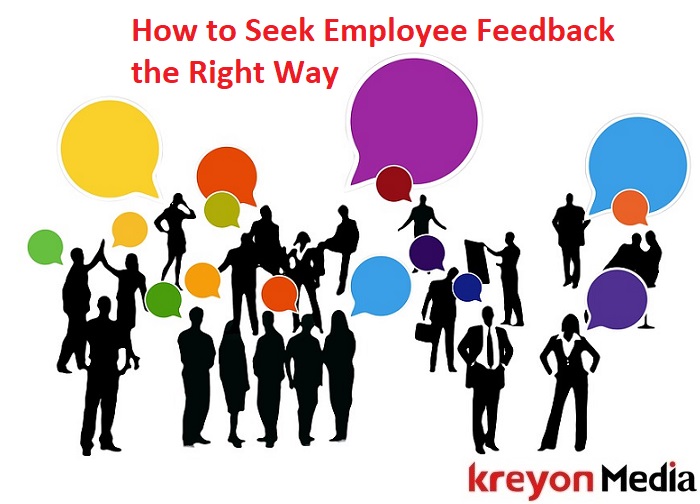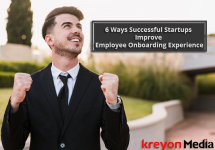
Employee feedback can be pivotal to guiding an organisational strategy, improving its performance and attracting a great talent pool. Employee feedback has become a quintessential way to gauge how your company is performing for its workers. It can give you great insights to unlock your team’s potential and help your company make the right moves.
According to research by Kronos & Future Workplace, 87% of HR leaders consider employee retention as a primary concern. Employee feedback is a potent weapon to enhance employee experience & guard against attrition. Organisations that hear what their employees have to say can build stronger team bonding. And it has become easier to take inputs from employees with online surveys and tools. Here’s a look at the ways your company can solicit feedback from its employees.
1. Onboarding Employees
When new employees are onboarded, it is a time to seek their inputs to see your organisation from a fresh perspective. Many of these new joinees would have worked for other companies and can bring in a good cultural mix. The new employee assessment and surveys can be done regularly in 1 month, 3 months, 6 months and 1 year time frame.
The right surveys can help your organisation answer some of these questions:
Is your organisation providing the right tools for employees to perform? Is your culture adaptive enough for people to gel with others? Is your interview process, performance measurement tools and working environment up with the best? What are the areas where employees need help? How can you improve as an organisation? Are tools & technologies measuring up with the latest industry trends?
2. Team Offsites

Office may not always be the best place to connect with employees and get their honest feedback. Many companies make it a priority to organise events, team gatherings and offsites. These events help build team bonding and employees can communicate in an informal manner. A lot of their concerns and honest opinions may be revealed during these events.
The feedback from these events can be used for course correction. When employees are heard, they feel empowered. They feel a sense of responsibility and belongingness which can augur well for the company. Not all employees will fit into your company culture. But those who stay with you must be heard and taken care of.
3. Action on Feedback
After taking inputs and feedback from employees, it will do no good if your organisation doesn’t act on it. The employees will feel valued once they see that their feedback leads to a positive and visible change.
Not all feedback will be useful or implementable. The management team needs to ensure it can prioritise feedback and incorporate the most meaningful inputs. These inputs can help the employees as well as the organisation.
A feedback report can be created with an actionable plan for implementation. The report needs to address basic questions for taking decisions as highlighted in the High Output Management by Andy Grove, former CEO, Intel:
What decision is needed?
By when?
Who should be consulted?
Who decides?
Who ratifies or vetoes?
Who needs to be informed?
4. Indirect Approach

A direct approach to employee feedback can put them in a defensive situation. Most employees will never be comfortable to speak their minds with their CEOs or the board members. Often, companies adopt a middle men approach to solve this problem. They use managers and HR representatives for this task.
The managerial staff can take feedback from the employees & feedback can be confidential. Technology driven surveys, suggestion boxes etc. can also be helpful. The idea is to identify the core reasons for improvement and not for targeting people.
5. One to One Meetings
One to one meetings are typically weekly or monthly meetings between a manager and an employee. These meetings could be anywhere from 30 to 60 mins. These meetings are very powerful ways to build rapport, assess performance and bring out issues that need urgent attention.
One to one meetings can help leaders understand the motivation of their employees. They can help them understand the needs of an employee, what he needs to increase his competence & achievement. By connecting and engaging with employees, organisations can help them perform at their best and coach them to increase their competencies.
One to one meetings were popularised by Andy Grove. They have been widely appreciated by the likes of Ben Horowitz, Marc Andreessen and several other leaders.
6. Exit Meetings

Outgoing employees can be a very good source of figuring out attention areas for your organisation. Employers and organisations can take feedback with exit meetings from employees.
When employees are quitting, they are honest and candid in their feedback. These issues can be discussed with an open mind leading to organisational growth and better retention strategies. Work life balance, learning and development, salary, location, job progress, and career development goals are some of the common issues due to which employees switch jobs.
Good organisations invest in career development of individuals, understand employee motivations and frustrations. Dale Carnegie, “the only way to influence people is to talk in terms of what the other person wants.”
7. Address Changes & Follow-Up
Employee feedback like their performance reviews is an ongoing process. When an organisation creates an actionable feedback report and incorporates meaningful and pertinent changes, it can again engage with relevant employee groups. A continuous improvement and ongoing engagement strategy can be developed for lifelong learning by organisations.
This strategy can give forums and representation to the teams to engage with management. The management can proactively create forums for feedback and seeking inputs to get progressive ideas for the organisation.
The Wrong Approach to Employee Feedback
Employee feedback needs to strike the right balance between what is useful and things that need to be ignored. When organisations become a political battleground, it can create a doomsday situation for talent and creativity. Employee feedback doesn’t work well, if your company takes a wrong approach to it:
i) Not Approachable
An open door policy builds trust, but when people have no way to communicate, they suffocate. A management team needs to be open minded and encourage communication in line with their organisation and team goals. An open door policy establishes confidence in people to talk about their concerns, ideas and even bring in new initiatives. Changes must be done proactively before you are forced to make them.
ii) No Action
 The value of the feedback lies in its successful implementation. Organisations that devote time to collect feedback must be able to prioritise is implementation too. Companies that are averse to employee feedback or take no measures for incorporating them eventually discourage people from speaking up.
The value of the feedback lies in its successful implementation. Organisations that devote time to collect feedback must be able to prioritise is implementation too. Companies that are averse to employee feedback or take no measures for incorporating them eventually discourage people from speaking up.
iii) Discuss Positives
Employee feedback is not only about the negatives or improvement areas. Infact, it can be a great way to discuss the things that are working well in the organisation. Employee feedback can reinforce the positive aspects of a company. Teams can use this as an opportunity to thank their management and show gratitude towards the best aspects of their company.
Overall, employee feedback is an effective way to learn about things that are working well in your company, build an employer brand and uncover new opportunities for employee & company growth.







